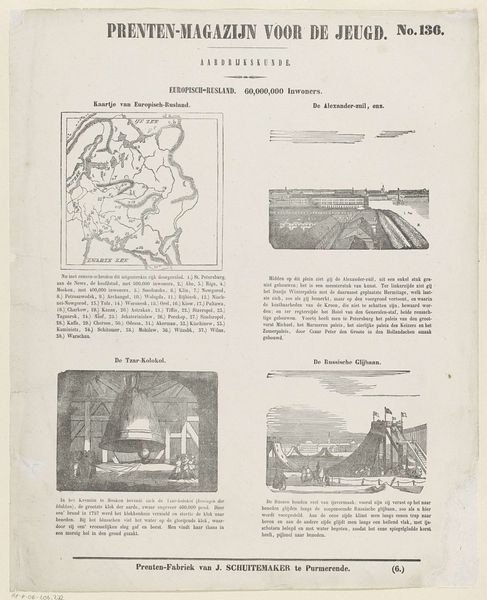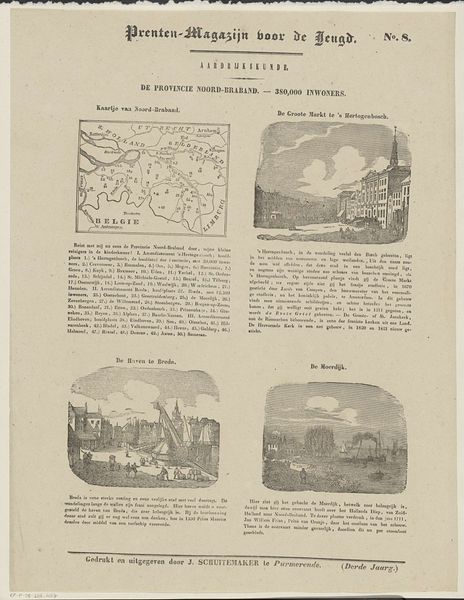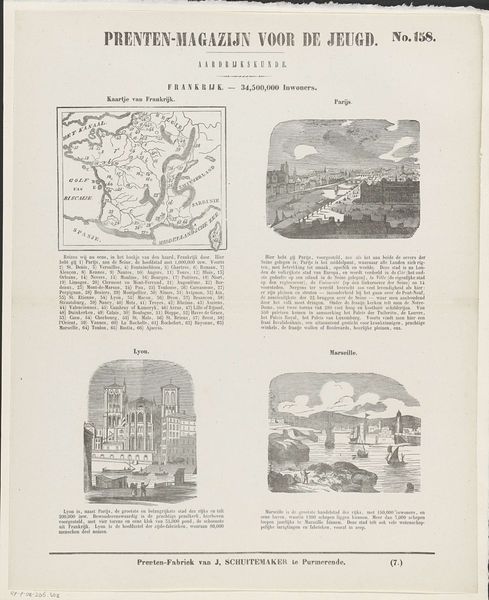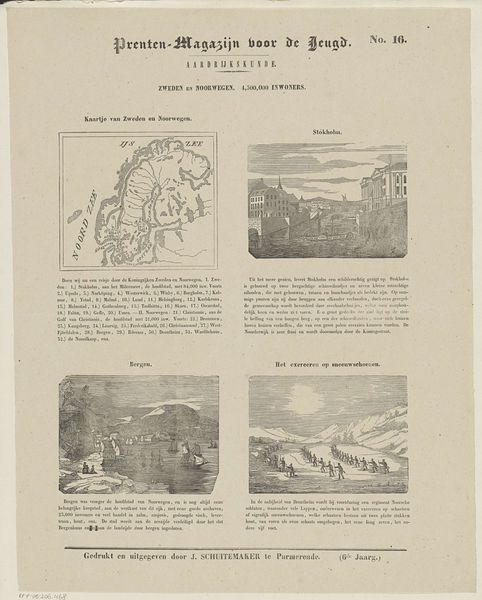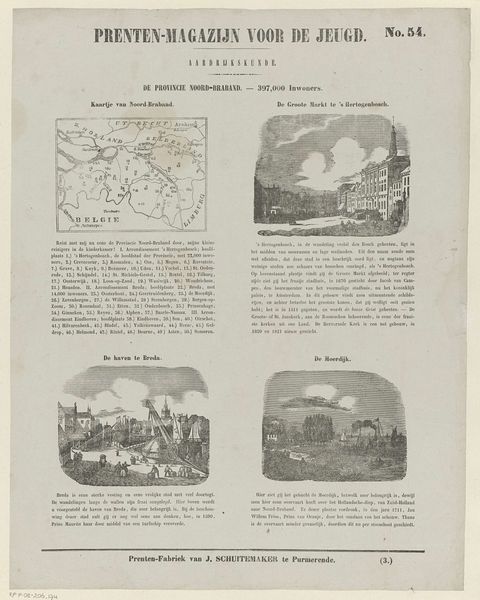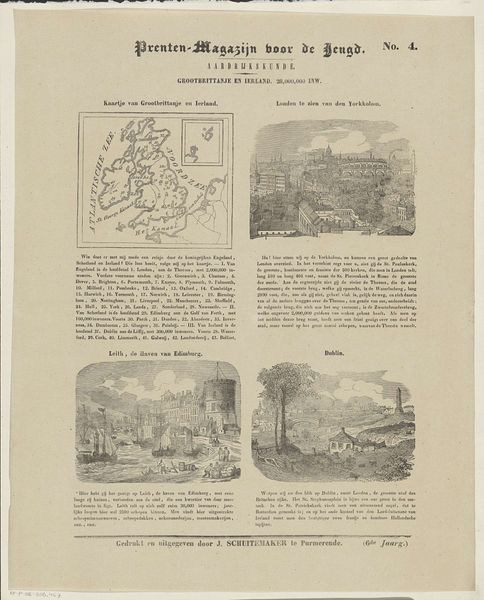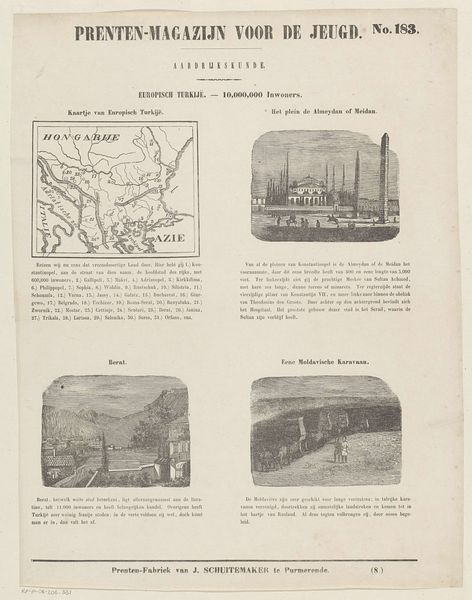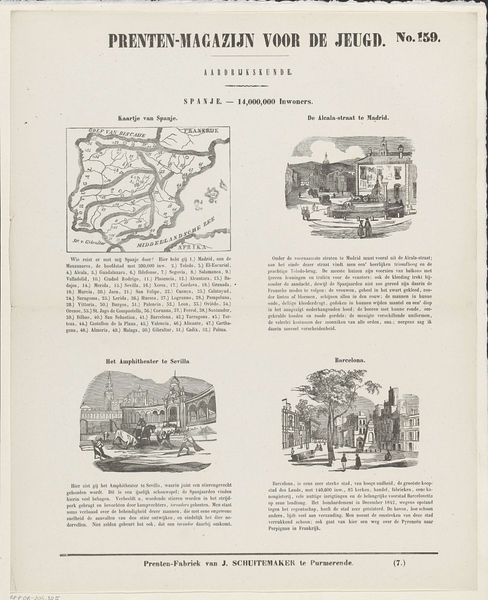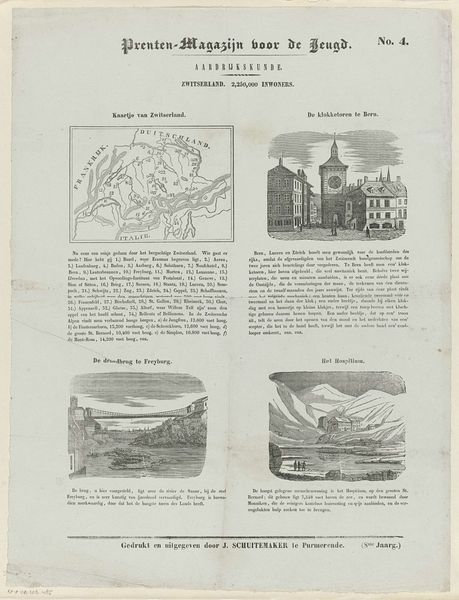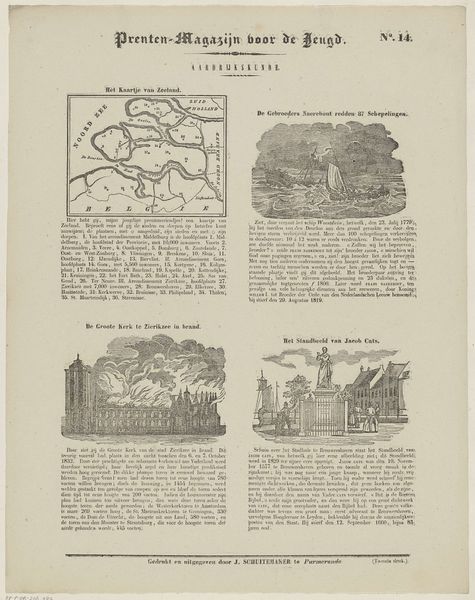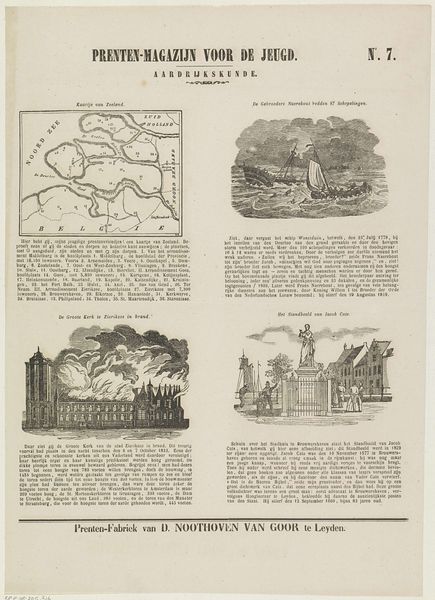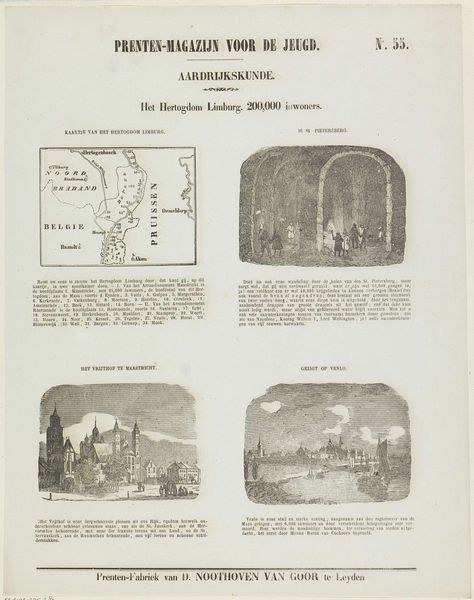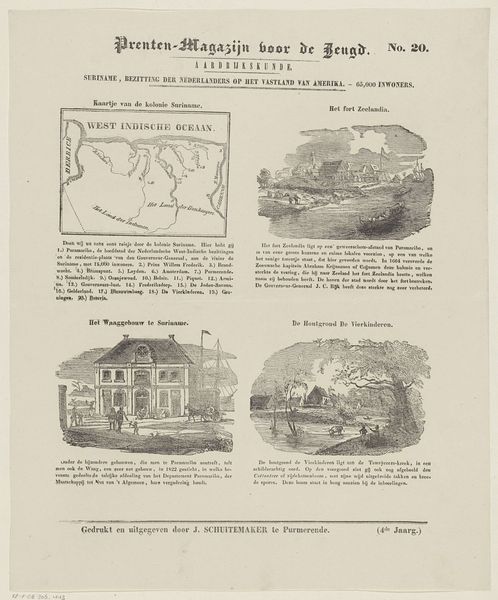
print, engraving
# print
#
old engraving style
#
landscape
#
romanticism
#
cityscape
#
history-painting
#
academic-art
#
engraving
Dimensions: height 419 mm, width 337 mm
Copyright: Rijks Museum: Open Domain
Curator: Here we have an engraving titled "Europisch-Rusland. 60,000,000 inwoners," which translates to "European Russia. 60,000,000 Inhabitants." It was created in 1847 by Jan Schuitemaker. Editor: My initial impression is one of detached observation. It's very graphic and diagrammatic; not particularly inviting. It feels more informative than expressive. Curator: Indeed. It's less about aesthetic beauty and more about conveying geographical and, one might argue, political information. Schuitemaker used engraving techniques common in printed media to represent Russia, probably for educational purposes. The composition, fractured into different visual spaces on one sheet, emphasizes compartmentalized data presentation. Editor: I see your point. Note how each sub-image, be it the map or depiction of the Tsar Kolokol bell, is given equal visual weight. The composition suggests the layout and informational hierarchy typical of educational materials from that time, highlighting accessibility over any expressive concern. It tells a story of state sanctioned understanding. Curator: Consider the prominence given to geographic scale versus artistic flourish. Look at the stark contrast between the cartographic section compared with representations of culture such as the Alexander Column, the bell, and the slide. The technique supports a functional delivery aimed at educating youth about the vastness, both physically and culturally, of Russia at the time. Editor: The rigid structure—those harsh, etched lines delineating space—speaks to a very particular way of knowing the world, a taxonomy if you will. It underscores the nineteenth century impulse toward classification and ordering, of understanding through systematization. Curator: Precisely. Schuitemaker gives form to a period keen to distill information down to comprehensible portions. And as a printed format destined for broad circulation, its sociopolitical power becomes clear, functioning less as a work of art and more as a vital mode of cultural encoding, shaping understandings of Russia for that demographic. Editor: I find myself pondering its effectiveness now. Does its layered informational assembly effectively speak across the centuries? Curator: A fitting question and an interesting full stop to our insights here. I'd say the answers probably depend on your reading of it now, your engagement and interpretive frame.
Comments
No comments
Be the first to comment and join the conversation on the ultimate creative platform.
